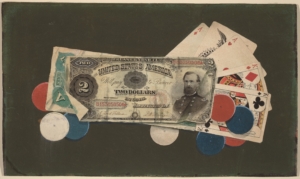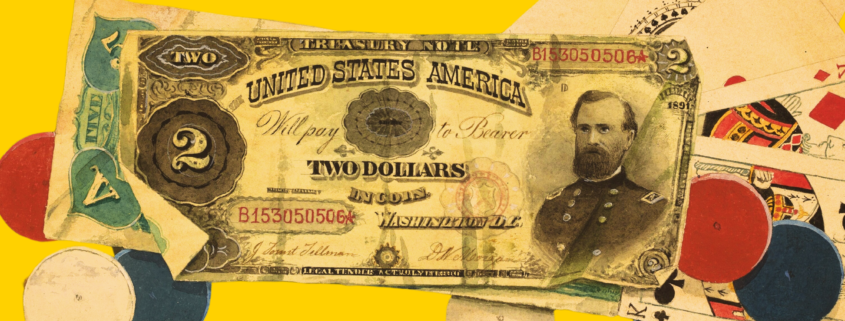Profit: Is it a bad word for an artist?
A sustainable career in the arts doesn’t have to be a dream. But a sustainable career in the arts likely requires a plan—including a plan to generate enough income to live. And if the plan to live includes enjoying time in the studio, the plan needs to include a little bit of profit.
Profit (money) is a complex topic. For many people, artists included, there is incredible emotion involved in their relationship with money. It impacts our being and rightfully gets a bad rap for its ability to influence the trajectory of one’s life. It can be challenging to even discuss objectively.
If money is too emotional to continue reading, consider giving yourself space to explore where that comes from. It is worth the investment of feeling and addressing.
What Profit Is
Separating money from emotion is important for a sustainable life. It allows us to focus on the rational aspects of money, finances, and concrete numbers on paper. An important element of business finances is profit. And yes, as a solo artist looking to sustain yourself, you are in business.
Technically and simply speaking, profit is the money left over after a business has accounted for all its costs and expenses. (An accountant and the government have much more nuance to this definition.) The leftover funds can be used by the business owner to pursue a lifestyle or reinvested into the business.
What Profit Is Not
- Profit is not what you pay yourself. In business, what you pay yourself is compensation or salary.
- Profit is not what you “take home,” especially if you have not paid yourself for doing your work.
Businesses struggle to be profitable when they are not honest about what it takes to be in business.
It is not uncommon for a business to fail to account for all the costs of doing its work. When we prepare our estimates or determine our prices, we might forget to include the cost of a material we purchased or neglect to consider shipping fees. Businesses may also fail to account for all the expenses required to maintain a studio, regardless of paying projects.
Quite frequently, we overlook the value of our time—whether on paying projects or otherwise. And yes, even if you enjoy doing it, you likely want to be paid, particularly if you want to avoid burnout.
But do I really need to be profitable?
Technically, no—you can refrain from potentially exploiting your audience, collectors, or customers. But you do need to be honest about what it takes to operate your business. If being an artist requires time for research or just time to think, you need to do more than cover the cost of materials and keep the lights on. You need to be able to afford “non-billable” time, including time in the studio (your R&D).
If you need help figuring this equation out for yourself, don’t journey alone—join our next coworking session or let’s get coffee.
Banner Art Credits: Trompe l’Oeil: A Full House with Chips, $2 and $5 Bills, c. 1895, by an unknown 19th-century American artist, is an illusion capturing the allure of chance and strategy. Executed in watercolor over graphite on cardboard, the piece meticulously depicts a winning poker hand alongside scattered currency and gaming chips, symbolizing risk, reward, and the precarious nature of financial fortune. Digitally recontextualized here, it parallels the careful planning artists must undertake to balance creativity with financial sustainability in their careers.



